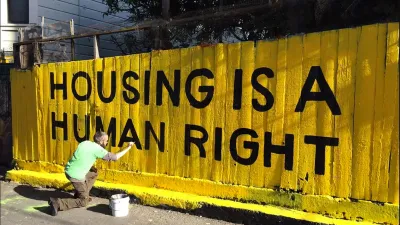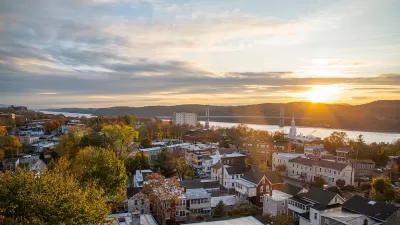In an interview, Rep. Jim Oberstar gives a retrospective of American infrastructure funding and talks about the need to consider transportation in light of the "post-interstate era."
"REP. OBERSTAR: What we have after the interstate era, is if there is a roadway here, we build and expand on that road. Because you have an 80–20 funding formula for highways - 80 percent federal funds, 20 percent state funds - and, on the other side, a transit funding program that is project-oriented - some projects might get 50 percent federal funds, some might get 60 percent, some might get only 40 percent - if you are a state department of transportation managing funds, you look at the formula and you say, "Well, we get 80 percent of the money if we build the road. We only get 50 percent or less if we invest in the transit system.""
"Funding is skewed away from transit and into highways because transit grew up in a different environment. It was a spin-off of railroads. It was during the 1960s, just before the creation of Amtrak. The railroads wanted to get rid of their passenger service. And they wanted to pass it off as a transit program. And secondly, transit was considered something to help the elderly and the disabled and the poor - it was a social program instead of a transportation program.
For example, Los Angeles had one of the most extensive streetcar systems in the country. But, they tore up the tracks, put in highways, roadways, streets and paved to accommodate the car. We have suburbs because we have the car. We have exurbs because of the car. Now, we have to transform our thinking in America."
Thanks to Franny Ritchie
FULL STORY: Rep. Oberstar on the transportation bill and reform

Alabama: Trump Terminates Settlements for Black Communities Harmed By Raw Sewage
Trump deemed the landmark civil rights agreement “illegal DEI and environmental justice policy.”

Study: Maui’s Plan to Convert Vacation Rentals to Long-Term Housing Could Cause Nearly $1 Billion Economic Loss
The plan would reduce visitor accommodation by 25% resulting in 1,900 jobs lost.

Planetizen Federal Action Tracker
A weekly monitor of how Trump’s orders and actions are impacting planners and planning in America.

Wind Energy on the Rise Despite Federal Policy Reversal
The Trump administration is revoking federal support for renewable energy, but demand for new projects continues unabated.

Passengers Flock to Caltrain After Electrification
The new electric trains are running faster and more reliably, leading to strong ridership growth on the Bay Area rail system.

Texas Churches Rally Behind ‘Yes in God’s Back Yard’ Legislation
Religious leaders want the state to reduce zoning regulations to streamline leasing church-owned land to housing developers.
Urban Design for Planners 1: Software Tools
This six-course series explores essential urban design concepts using open source software and equips planners with the tools they need to participate fully in the urban design process.
Planning for Universal Design
Learn the tools for implementing Universal Design in planning regulations.
Caltrans
Smith Gee Studio
Institute for Housing and Urban Development Studies (IHS)
City of Grandview
Harvard GSD Executive Education
Toledo-Lucas County Plan Commissions
Salt Lake City
NYU Wagner Graduate School of Public Service





























